Dietmar Fercher, Andrea Karrer Austrian Desserts and Pastries 108 Classic Recipes Copyright 2011 by Skyhorse Publishing
Photos: Konrad Limbeck All Rights Reserved. No part of this book may be reproduced in any manner without the express written consent of the publisher, except in the case of briefexcerpts in critical reviews or articles. All inquiries should be addressed to Skyhorse Publishing, 307 West 36th Street, 11th Floor, New York, NY 10018. First edition published 2010 Residenz Verlag Part of Niedersterreichischen Pressehaus Druck- und Verlagsgesellschaft mbH St. Plten - Salzburg Skyhorse Publishing books may be purchased in bulk at special discounts for sales promotion, corporate gifts, fund-raising, or educational purposes. Special editions can also be created to specifications.
For details, contact the Special Sales Department, Skyhorse Publishing, 307 West 36th Street, 11th Floor, New York, NY 10018 or info@skyhorsepublishing.com . Skyhorse and Skyhorse Publishing are registered trademarks of Skyhorse Publishing, Inc., a Delaware corporation. www.skyhorsepublishing.com 10 9 8 7 6 5 4 3 2 1 Library of Congress Cataloging-in-Publication Data TK DIETMAR FERCHER ANDREA KARRER Austrian Dessertsand Pastries 108 Classic Recipes Photography by Konrad Limbeck
Illustrations by Barbara Kampel 
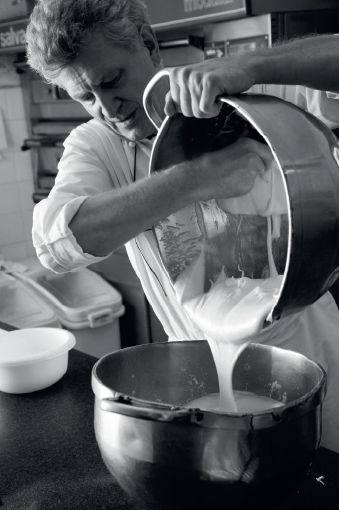
Contents
The Sweet Life
Since the nineteenth century, Viennese confectioners have been world-renowned, and even today Vienna remains a fertile ground for culinary careers. The pastry kitchens have retained their traditions while at the same time always remaining receptive to new influences. The unparalleled abundance and wealth of variations that has resulted is practically unique among cuisines. My sweet tooth has always forced me to succumb to the many pleasures awaiting me in Vienna's pastry heaven.
For a long time, I mourned the irresistible pastries that used to be at the Imperial, until I found out that the former pastry chef of the Imperial group had gone into business on his own. Now he's among the very best Viennese confectioners. Dietmar Fercher's crisp Schaumrollen (cream rolls), delicate Schaumschnitten (cream cakes), and fluffy Golatschen (kolache pastries) have revolutionized the confectionery of our time with their almost therapeutic effects. It took my eating a lot of cream cakes at the small confectioner's on Engerthstrasse until Dietmar finally promised to rework his recipes and to write a Viennese pastry book with me. He revealed about 180 recipes to me, and Konrad Limbeck has created atmospheric photographs to match. Since I am of the belief that the origin of many a recipe often tells you more about historical contexts than some scientific treatises can, I have made the traditional division into cold and warm pastries.
This will also allow you to learn about the origins of some of the dishes. This background is complemented by professional tips and important basic skills from the bakery to enable you to easily follow Dietmar Fercher's pastry baking recipes. All recipes were baked in normal household quantities, amended, revised, and tested again, to ensure they truly do work. Wherever greater attention is necessary, Barbara Kampel contributes to easier comprehension with her beautiful illustrations. One more piece of important advice: before preparing a pastry, make sure to read the entire recipe carefully. Only then follow it step by step, ounce by ounce.
If you follow this procedure, you can be sure of successfully preparing every dessert in this book. Andrea Karrer PS: Not just the cream cakes, but also the plump cranberry Guglhupf (ring cake) and the (best!) apple crumb cake had to be devoured. Oh yes, and the Krapfen (donuts) at carnival, Marillenkndel (apricot dumplings) in July, countless Plunder (Danish pastries) for breakfast, then of course the occasional banana and raspberry cream cakes, and the puff pastries I only recognized from childhood memories, and delicacies such as Rig Jancsischnitten (special cake named for a gypsy violinist), and the list goes on 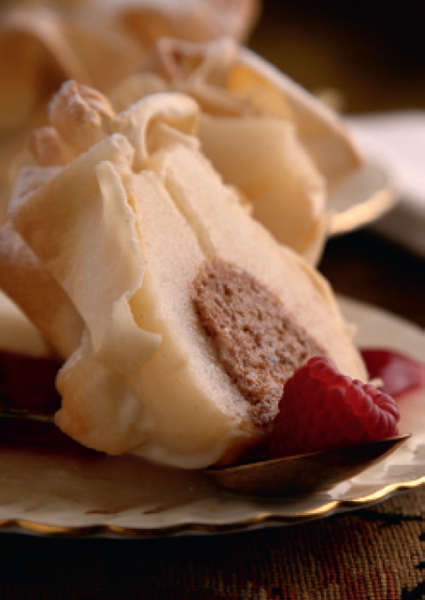
Warm
Mehlspeisen
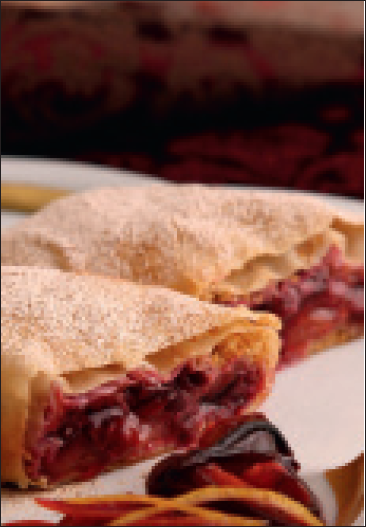
Strudel
It's practically the Austrian national dish , but like much of what became part of Viennese cuisine, strudel is also an immigrant, and quite the well-traveled one at that: The Arabs were the first to practice the art of stretching out paper-thin sheets of dough, filling them with rose jelly or orange syrup, and baking them. Nor did they want to miss out on this tender delicacy when out conquering. Whether in northern Africa, Spain, or western Africa, wherever the Arabs advanced, strudel went native. In antique cookbooks, you can still find strudel dough under the name Spanish dough.
However, the Moors of Spain did not roll up the strudel dough, but rather laid alternating layers of dough and filling atop one another. Baklava, originating from Turkey and extremely popular in the Balkans, is prepared according to this principle as well. The paper-thin pastry sheets accompanied the Arabs triumphal entrance into France. When the Arabs returned to their homeland after their defeat at the Battle of Poitiers, the liberated countries retained the skill of baking strudel, but it did not spread any farther. The strudel was preserved as Pastis or Croustade and potentially could even have been assimilated into the Austrian cuisine along with many other French specialties. As a matter of fact though, it was brought by the Turks.
They advanced via the Balkans to Hungary and Vienna, and in their field kitchens wreaths of aromatic strudel could be found, which stayed on after the siege of Vienna as a gift from the Orient. Hungary, where strudel is known as retes, must have been quite the special stopover. For here an especially sticky flour could be found that made the dough very malleable. Thus western Hungary (present-day Burgenland), Vienna, and Lower Austria were the first areas where strudel became widespread. Here you can also find the greatest variety of fillings. In Vienna it is said that a conscientious strudel baker stretches out the dough so thin that she can read her love letters through it.
This led to the saying that the best strudel is baked by a cook who is in love. Today of course you can buy strudel dough ready-made, a true delight. But if you ever bake strudel for someone you're especially fond of, you should try making the strudel dough yourself for a change so that you can pour out your heart not just into the filling, but also into the whisper-thin sleeve. Packing filling into strudel dough is the most natural thing in the world to us today. It's a brilliant concept! In this fashion, the juice from the fruit or other ingredients can't leak (provided of course the strudel is made correctly). Tips Use fine flour for strudel dough.
Use fine flour for strudel dough.  It is essential that the dough rest for at least 30 minutes so that it can relax and the glutens in the dough can develop.
It is essential that the dough rest for at least 30 minutes so that it can relax and the glutens in the dough can develop. 
Next page
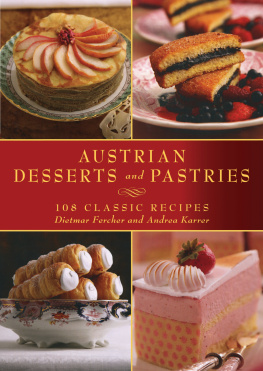



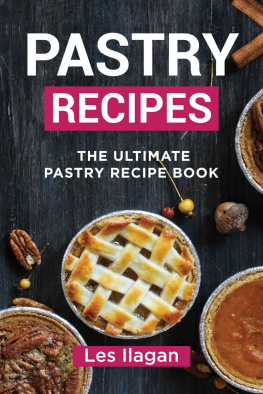
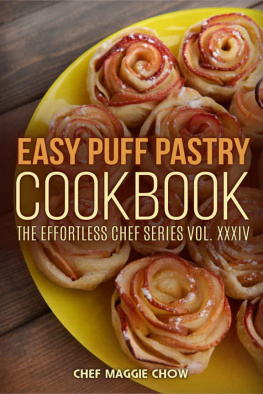
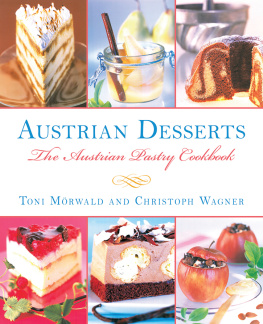

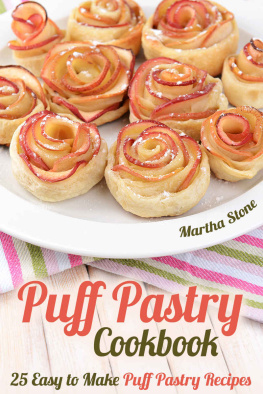
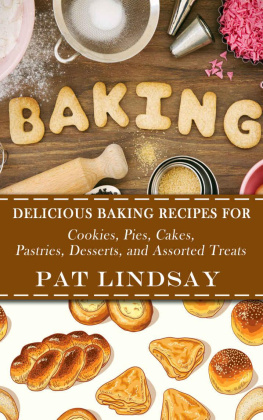

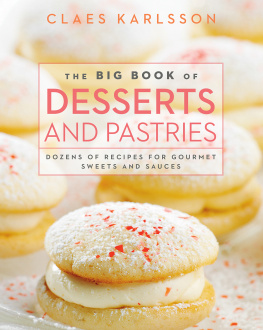




 Use fine flour for strudel dough.
Use fine flour for strudel dough.